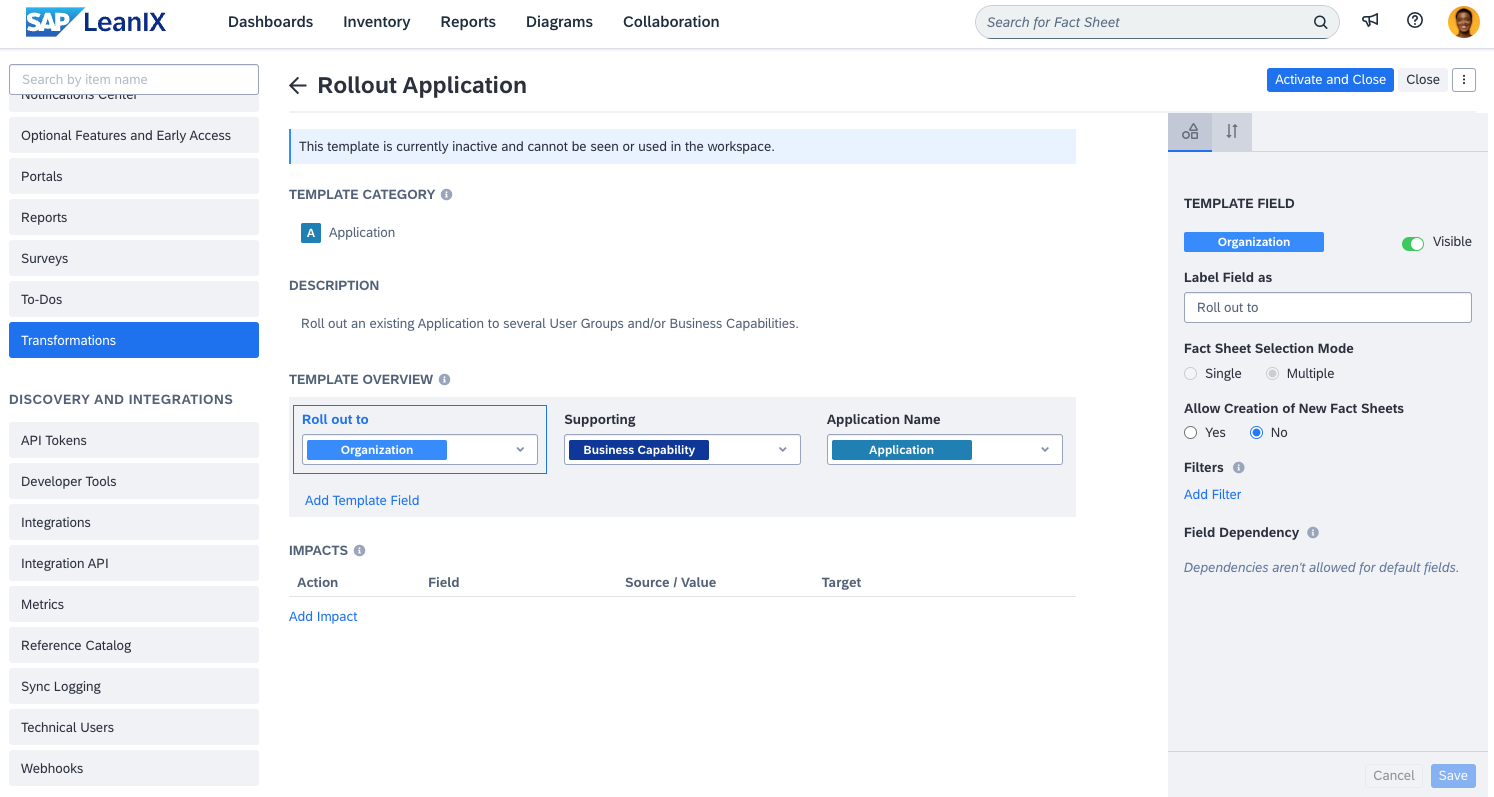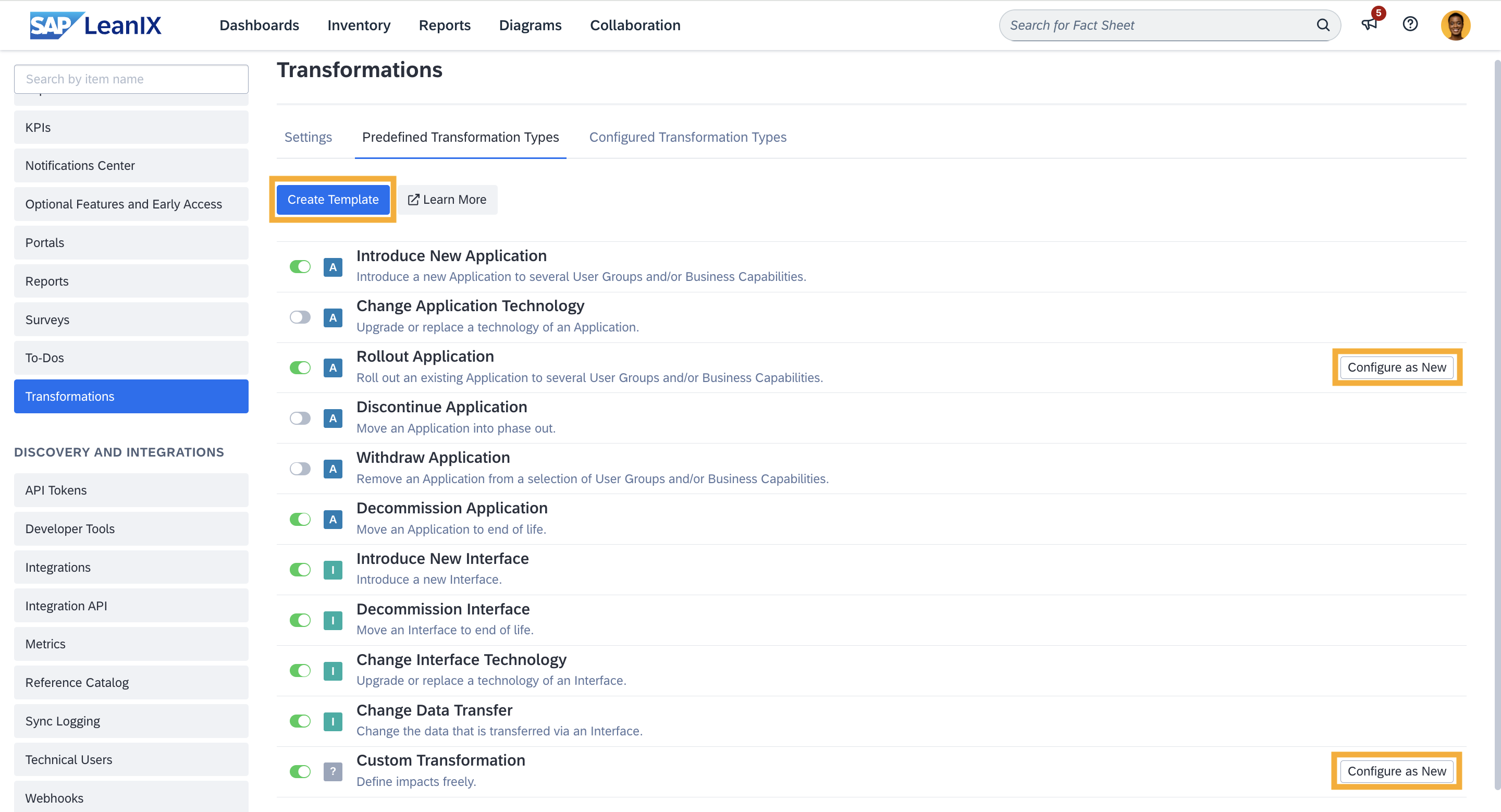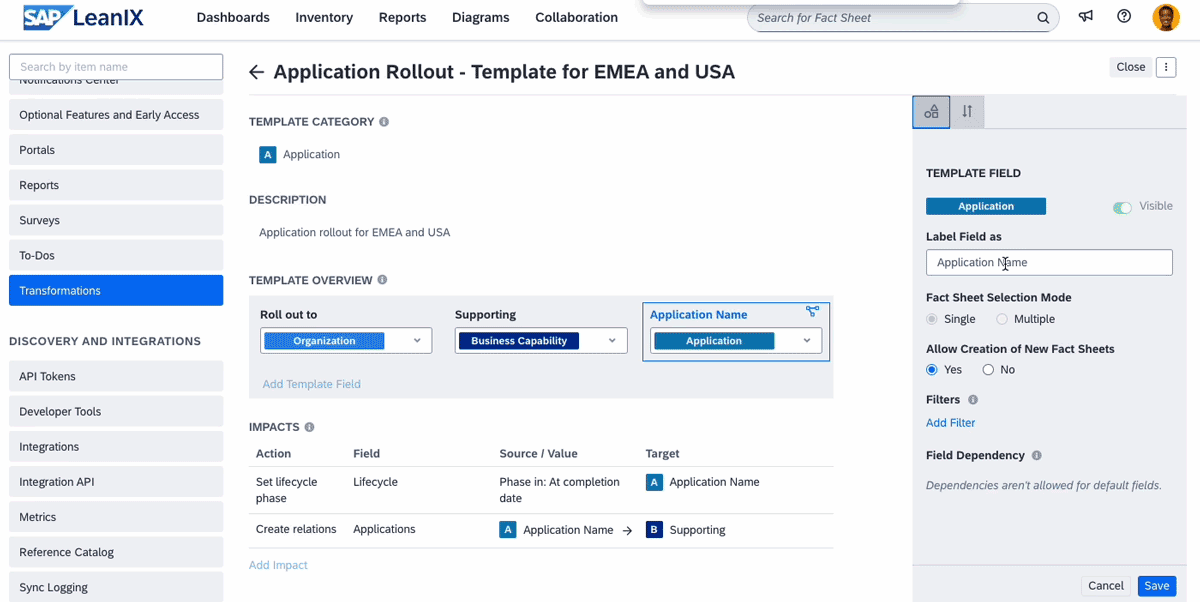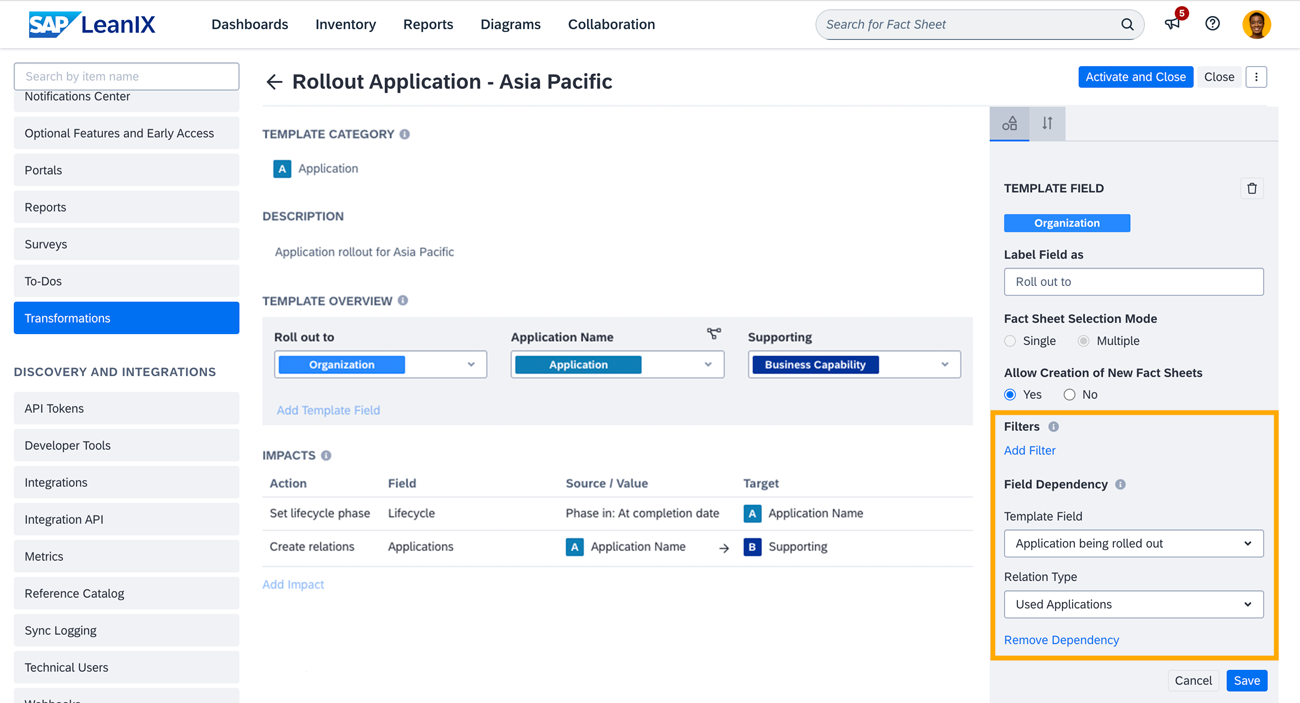Creating Custom Transformation Templates
Customize and create transformation templates to fit your needs: add impacts, adjust fields, show/hide fact sheets, and make it user-friendly.
Introduction
Users with admin rights can create custom transformation templates from scratch and also customize the Rollout Application transformation template, and save it as new. These newly created templates will then be available for selection in initiative fact sheets while creating transformations.
Creating custom transformation templates offers you the flexibility to model more complex transformations involving your custom fields and custom fact sheets.
It allows you to:
- Embed any custom impacts to the template itself instead of adding them every time a transformation template is used in the initiative fact sheet.
- Change the template's name, category, and description and add fields, relationships, and impacts. For instance, add and set the lifecycle status field.
- Remove or include specific fact sheet types based on their relevance to your rollout process. For example, adding process fact sheet type to the template in case the rollout of the application impacts processes.
- Predefine the scope of fact sheets available for template users when they are adding fact sheets to a template field.
- Re-label the fields of the template to make it descriptive, so that the template speaks the language of regular users in your organization.

Configuring a Transformation Template in Admin Settings
Customization allows you to tailor the template to suit your specific needs and streamline your rollout process effectively in the following ways:
- Addresses your transformation complexities that the default Rollout Application template doesn't cover.
- Flexibility to decide the scope of the transformation by selecting the fact sheets that are relevant, either default or custom fact sheet types.
- It enables regular users to work with the template effortlessly, as incorporating custom impacts can be challenging for users unfamiliar with the meta model or transformation expectations.
- It ensures users can understand and fill templates easily, as the labels, descriptions, and language can match the organization's style.
Creating Transformation Templates
To create a transformation template, do the following:
- Navigate to Administration > Transformations.
- In the Predefined Transformation Types tab, you can:
- Configure the Rollout Application template and save it as new by clicking Configure as new against it.
- Create a custom transformation template from scratch by clicking either Create Template at the top or by clicking Configure as new against Custom Transformation template at the bottom.

Creating a Custom Transformation Template
- In the resulting overlay, add a name, category, and description, then click Save. It leads you to the template configuration page.
- In the template configuration page, click Add template field or Add impact, to add a field for the fact sheet or to define impacts. For Custom Transformation templates, you will start from scratch by adding template fields first.
- Configure the template fields, define the impacts, and click Save. For more details on configuring template fields, see Configuring Template Fields.
- Click Activate and Close at the top right corner.
You can find the newly added transformation template in the Configured Transformation Types tab of the configuration. From there, you can revisit and make any further modifications as needed.
These newly created custom templates will then be available for selection under the selected fact sheet type category in initiative fact sheets while creating transformations.

Custom Transformation Template Available for Selection in the Initiative Fact Sheet
Configuring Template Fields
When creating or configuring the template, clicking on a template field opens a side panel where you can modify the template's fields. Changes made in the side panel are reflected in real-time, allowing you to preview how the template will appear to other users.
You can modify field labels to provide clear context for the users and also rearrange the order of the fields as needed.

Configuring Template Fields in the Side Panel
Note
Hiding fields is feasible in pre-existing templates but not in those created from scratch. Therefore, it is not possible to hide fields in Custom Transformation Templates.
Predefining the Scope of Available Fact Sheets for Users
Using filters and field dependency settings on the side panel, you can predefine the scope of fact sheets available for template users. This ensures users can only select the most relevant and appropriate fact sheets while using the templates, simplifying their selection process and reducing the chances of errors in selecting incorrect fact sheets.
For example, in the template, you can preset the filters to restrict the application field to only list a specific subtype of applications or applications from a certain region or particular organization, etc.
To predefine the scope of available fact sheets by presetting the filters, follow these steps:
- Select the relevant template field.
- On the right side panel, click Add Filter. This opens an overlay where you can choose and add filter criteria.
- Select and add the desired filter criteria.
- Click Use Fact Sheet Filter.
Only fact sheets that meet the specified filter criteria will now be available for selection by users.
Similarly, field dependency allows you to filter out fact sheets based on the fact sheet a user has selected in a preceding field. For example, when rolling out applications to various organizations, you can limit the list of organization fact sheets to be shown based on the application the user has selected.
To define field dependency between two template fields, follow these steps:
- Select the dependent template field that should list limited fact sheets based on a preceding field’s fact sheet. Note that the first field in the template cannot be selected as a dependent field, as a dependent field can only reference preceding fields.
- On the right side panel, from Template Field, select the template field that will determine the list of related fact sheets in the dependent field. Here, because a dependent field can only reference preceding fields, you can select only template fields positioned before the dependent field.
- From under Relation Type, select the relation between the two fact sheet types (template fields), ensuring only fact sheets related by that relationship are listed in the dependent field of the template.
- Click Save.

Predefining the Scope of Available Fact Sheets Using Filters and Field Dependency Settings
When users use the template, the dependent field will remain inactive until a fact sheet is selected in the field it depends on.
Note
Field dependencies cannot be created for default fields in predefined transformation templates. However, you can establish field dependencies for any additional fields you have added in predefined templates or for any fields within a custom template.
Updated 7 months ago
